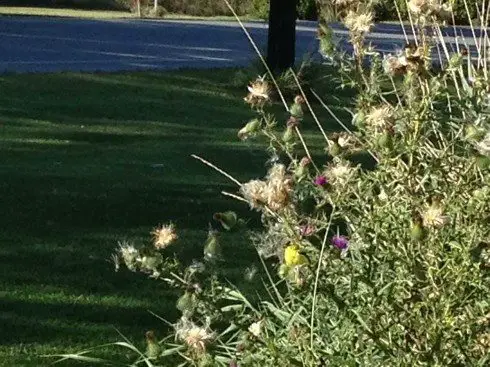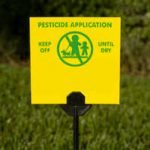Drive along almost any highway or major roadway in the country and you’ll notice a huge missed opportunity for creating more wildlife habitat.
Roadside Lawn
No, I do NOT recommend taking photos with your phone while driving along the highway 🙂

Why do townships, cities, and states waste so much money keeping roadsides mowed (and spraying a horrendous amount of herbicides in the process) when these places present the perfect opportunity to provide habitat for butterflies, native bees, and birds?
Mile after mile, those wide medial strips and mowed roadside edges spread across the country.
From a financial perspective, how much money is wasted every year mowing these spots week after week? How much money is wasted to pay the chemical trucks to drive along spewing their cargo of toxic chemical herbicides to kill “weeds” like Milkweed that is so vital to a declining Monarch population?
I had the opportunity to visit some of the state parks on the Champlain Islands near Burlington, VT recently and noticed something quite different.

Goldfinch in Thistle
See the Goldfinch?
The roadsides here were buzzing with life. Many different types of butterflies, native bees, and even birds were feasting on the abundant resources provided by the flourishing native plants which lined these roadways instead of mile after mile of mowed turf grass which provides no benefits at all to wildlife, and costs so much to maintain.

Roadside Wildlife Habitat
Instead of paying the mowing company every week, these communities probably only mow their roadsides once a year (to keep succession at bay and the roadside edges free of trees). They are saving a ton of annual expenses and also providing welcoming habitat for wildlife. How smart is that? (I’d say it is VERY smart!)

Aster and Goldenrod
Even the homes took a different approach. While there was still some lawn, the edges of each property and the space along the road were allowed to grow wild. Goldenrod, thistle, milkweed, and so many more native plants filled these spaces. And so did the butterflies, bees and birds.
Aster and goldenrod are important sources of food and habitat for many different types of wildlife. Both of these plants provide nectar and pollen for bees, butterflies, and other insects. The flowers of aster and goldenrod also provide food for birds and other animals. The leaves and stems of these plants provide cover for nesting birds and small mammals, and the seeds of aster and goldenrod provide food for small birds and mammals.

Roadside Milkweed
Milkweed is a great habitat for wildlife because it provides a source of food and shelter for a variety of species. Many species of butterflies and moths rely on milkweed as a source of nectar and pollen, while other animals, such as birds and small mammals, use the leaves and stems of the plant as a source of food. Additionally, the plant’s deep roots help to stabilize the soil and prevent soil erosion.
So let’s stop wasting so much money. Become involved in your community and encourage them to cease with the mowing and toxic chemicals and create wildlife habitat instead!
More From Ecosystem Gardening:
Submit your review | |








